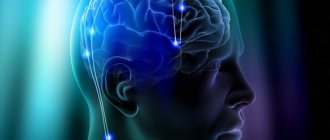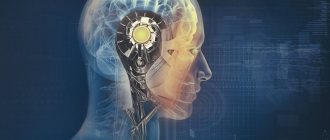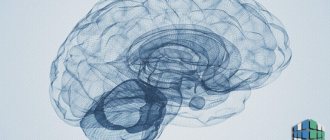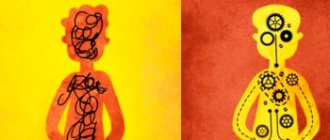What is flexibility of thinking? When we talk about flexibility, most people think of yoga or Pilates poses, not our thoughts. But what if we could also develop a flexible mindset to promote good health and well-being in our being?
With practice and awareness, we can develop an agile mind that will enhance our experience and help us become more flexible, creative and happy.
Flexible thinking is being critical and intelligent about being open to change.
Flexible thinking is much more than a skill or competence: it is a virtue, it is the opening of our minds to see, understand or interpret reality from different perspectives, this openness in a critical way allows people and society to better adapt to its dynamic environment, generating innovative and /or creative changes that impact a better quality of life.
A flexible mind allows us to achieve our personal and group goals in a more fruitful and effective way, solve problems better, helping us develop creativity and innovation, which will enable us to better identify opportunities and take advantage of them.
Mental flexibility is actually about adaptability and the ability to shift our thoughts from the abstract to the concrete in order to respond effectively to any given situation.
Rigid “black and white” thinking can help us relieve stress and quickly resolve situations, for example, by following certain rules, but it does not make us deep and creative thinkers, nor does it allow us to easily deal with problems when they arise, even if they relate to our development of life.
What is mental flexibility?
Flexible thinking is part of a group of skills called executive function. Problems with these skills are common in children with ADHD (attention deficit hyperactivity disorder). But other children and adults who think and learn differently may also have difficulties with flexible thinking and executive function.
Flexible thinking, also known as cognitive flexibility, is the ability to think about something in more than one way.
To be flexible is to create, explore, generate, imagine, improvise, invent, change, relate, transform and adapt. It is not a decision to change, even if it is inconvenient, but an action when it is necessary.
In contrast, an inflexible person is a slave to his circumstances and his ironclad statements, unable to cope with change with an adaptive attitude, and is unlikely to be completely happy since everything around him cannot revolve around his particular norm. This inflexibility can cause problems at work and in your personal environment, but also, and most importantly, in your relationship with yourself.
Reconsidering Beliefs
Each person adheres to his own life principles. They contribute to making responsible decisions by indicating the direction of movement. In order to develop flexibility of thinking, you will need to begin to show greater loyalty to certain things. And an alternative vision of the world will allow us to do this. Achieving this goal quickly is impossible. Sometimes a person needs a lot of patience and time to start thinking immediately in any situation, and only then do it.
To cultivate flexible thinking, you need to train a lot, while revising your most significant beliefs. All this will allow you to take your mind off the problem a little in order to start looking for optimal ways to solve it. Going through difficulties incredibly strengthens a person, especially if he himself was able to find a way out of a difficult situation. Changing habits plays a big role here. A move like this can work real miracles.
Why and who needs flexibility of thinking
Children and adults who have problems with flexible thinking may experience difficulties at home, work and school. The situations are different, but the problem is the same.
Here are some examples of behavior you may observe in people with a lack of flexible thinking:
People with flexible thinking difficulties may freeze and do nothing when faced with problems. Or they try the same strategy over and over again, even if it doesn't work. Therefore, they often get upset and angry.
This rigid way of thinking may manifest itself when they socialize or when performing household chores. As a rule, they do not understand that some words have two or more meanings. Or not realizing that the strategy they used to solve one type of problem might work for another. Most often they become fixated on some thought, deed or idea.
Lack of mental flexibility is called cognitive rigidity. It occurs in many disorders and therefore cognitive flexibility is either altered directly or in association with changes in the function on which mental flexibility depends.
Demonstration of flexibility of thinking
Flexibility manifests itself depending on the level of thinking:
Alternative
Flexible thinking occurs when people can think about things differently, adapt to change, and abandon the old way of doing things. Using a new method is an alternative solution.
Taking responsibility
Being flexible does not mean being submissive or obedient, because the true secret of strength lies not in the ability to adapt, but in resilience and taking responsibility. For this reason, you need to be very clear about your goals, interests, needs and be reasonable about your own beliefs.
Switching attention
Multitasking at work for adults and completing homework and studying for a test for children also require flexible thinking. The ability to switch attention between different subjects becomes increasingly important as children get older and have more school work. This also applies to adults when moving up the career ladder.
Creativity
Something flexible is something that has the ability to bend easily. It is flexible without tearing and, in addition, with the ability to return to its original shape. Flexibility is a physical skill, but it is also an emotional and mental creative approach to a situation. We are flexible because we adapt to the circumstances, environment, or people with whom we interact. After all, flexibility is the only way to jump over obstacles, fall and get up, which you inevitably have to do more than once in life.
Accepting someone else's point of view
Learning to adapt to change and become stronger and more resilient is one of the most powerful emotional keys. To achieve this, it is important to develop flexibility as it is one of the skills that allows you to adapt. And with yourself, and with the environment, and with people. Learning to be tolerant of others, freeing ourselves from judgment, and promoting acceptance of others' points of view are the basic principles if we want to be less harsh.
Taking responsibility
Unfortunately, not every person is capable of this. The reasons lie in those factors that contribute to the formation of irresponsibility and mental relaxation in a person. The individual gets used to trying not to pay attention to what is happening to him. Of course, life is much easier this way. After all, you don’t need to make any effort when you need to perform important actions. However, it is worth keeping in mind that a person who runs away from his essence will never become happy. It’s like detaching yourself from your own feelings when you don’t even have time to identify and realize them.
When accepting full responsibility, a person must have the ability to admit his mistakes. This is a demonstration of the flexibility of the mind. It is worth noting that people who have learned to overcome the difficulties encountered along the way note that it was the acceptance of responsibility that allowed them to do this.
How to develop flexibility of thinking?
Developmental psychologists have found that cognitive flexibility develops between ages 3 and 4 and that its emergence requires a wide range of cognitive abilities that also develop at this age. According to research by developmental psychologists, attention control, memory, impulse control and reasoning, abstract and conceptual are some of the skills that allow people to develop cognitive flexibility.
Getting rid of fears
Don't be afraid to try something new: learn to dance, learn a new language, or cook a new recipe. In a study of older adults, they engaged in a variety of new and challenging activities for three months and then showed significant improvements in creativity, problem-solving ability, and other measures of fluid intelligence. Mental flexibility is promoted by novelty, which promotes brain growth and development throughout life.
Ability to experiment
Plan to be spontaneous: change your routine regularly, if you want to go for a walk, change the route, go to new destinations, change your plan from time to time. Mix up your thinking: Innovative and creative ideas often arise after mixing periods of focused thinking and distracted attention. So you have time to focus on projects or tasks, intentionally and sometimes in scattered ways, such as while watching TV.
Going beyond
Change the context and/or environment: take a vacation, walk around the block, take a break, take a coffee or tea break. Change the context and/or your environment and you will experience a change in mentality. Exercise also provides a great mental boost.
Reconsidering Beliefs
Question your thoughts and words: Be aware of what you think and say. Don't get tied down or stuck in one way of thinking. Watch your tongue. Remove those thoughts and words that do not serve and/or help you, replace them with productive ideas and phrases. Look at the usual order of things from a different angle, imagine yourself in the place of another person.
Personality development
Be flexible with others, but also with yourself. To develop this skill externally, we must start by paying attention to ourselves, by emphasizing our individuality. Maybe you are asking too much of yourself? Do you often feel guilty? Are you punishing yourself? Listening to ourselves, caring for ourselves, tolerating ourselves, and forgiving ourselves is part of the process because it is impossible to be flexible with others if we are not flexible with ourselves.
Mental operations
What does mental flexibility depend on? From the mental operations he performs. They include comparison, contrast, as well as synthesis and analysis, specification and abstraction, systematization and generalization. These elements are considered single, paired and reversible.
Let's consider the features of mental operations:
- Comparison. Such an operation consists in establishing the differences or similarities between the objects of thought. When comparing, a person discovers certain essential properties of phenomena and objects. According to some researchers, this is the most essential aspect of thinking. By looking at objects from different points of view, a person gets the opportunity to compare and contrast their qualities in unusual, new circumstances.
- Analysis. This process refers to the mental division of a phenomenon or object into its constituent parts. Analysis helps us in our quest to gain a deeper understanding of a subject. This requires studying each of its parts separately. Analysis of an object can also be abstract. It is carried out to identify the essence of a phenomenon or object.
- Synthesis. As opposed to analysis, this process allows you to create a whole from individual parts. It is not always possible to say what exactly is subject to unification. And here we can find a close relationship between synthesis and analysis. After all, in order to unite something, sometimes it is necessary to understand what can make up a single whole.
- Generalization. This process means reducing something particular to the general. Generalization follows the analysis of the material and the extraction of the properties of individual parts by comparing them. After this, it becomes possible to determine the main and general things that are characteristic of objects that are the material of thinking.
- Abstraction. Such a process means distracting thinking from the specific sensory-figurative properties of the object or phenomenon chosen by it. It is possible only after a person excludes everything unimportant, particular and accidental.
Exercises to develop flexibility of thinking
How to develop a flexible mind? Although some people have an innate ability for flexible thinking, anyone with awareness and practice can access it.
Here are some ways to develop flexible thinking:
Not only will these tips help you exercise your brain, they will make you feel stronger and more creative, setting you on the right path to achieving your highest goals.
Who is flexible, listens, analyzes, appreciates and adapts, trying to give their best for their goal, without forgetting the needs of others.
Mental flexibility is not arbitrary or whimsical, but is based on our goals and aspirations, and the balance between control and spontaneity. When we are mentally flexible, we pursue goals knowing that those goals can sometimes be changed or modified as we learn more about situations and our ability to achieve the impossible.
Natalia Shakhova
Getting rid of fears
A variety of phobias always prevent a person from moving forward. Fears limit us so much that they contribute to the creation of certain internal frameworks, from which it is very difficult to break out. It is also worth remembering that anxieties and doubts always play a negative role and can ruin any undertaking in the bud. If a person experiences strong fear, then he will certainly refuse any prospect. That is why in order to achieve the desired goal you need to stop being afraid. Only in this case will flexibility of thinking appear, which will allow you to achieve significant results in life. The individual will begin to think constructively and direct his mind towards creation.
Developing individuality
Not many people are guided only by their own desires and opinions. In order to develop individuality, a person will need to begin to live in accordance with his purpose and conscience. This leads to the need to find something you love. The chosen activity will allow you to become the master of your existence. The achievement of such a goal is facilitated by creative activities, which must certainly be enjoyed and bring tangible benefits.
In addition to changing your inner vision of life, mental gymnastics are recommended. It can develop flexibility in the same way that physical exercise strengthens our body. It only takes a few minutes a day to do mental flexibility exercises. They are the practice of very simple strategies that promote the interaction of the left and right hemispheres of our brain. This leads to the creation of new connections between neurons and gradually increases the flexibility of the mind as a whole. Does a person need such exercises or not? In order to determine the answer, it is enough to pass any test for flexibility of thinking. Answers to the proposed questions will allow you to check your originality of thinking. But when solving a mental flexibility test, you shouldn’t immediately give up and discover the correct answer. It's worth thinking about, but you need to do it without too much thought.
How to do gymnastics for the mind?
Puzzle solving
How can you constantly maintain your mental activity in good shape over the years? There are puzzles for adults for this purpose. They present logic problems, as well as tricky, funny or difficult questions.
In order to solve puzzles for adults, a person does not need a high level of education. At the same time, such a process will be an excellent training in ingenuity and will bring the joy of achievement. When solving riddles for adults, you will need to use out-of-the-box thinking. This will give a great impetus to improving intellectual development. Subsequently, a person will begin to quickly find the optimal solution in non-standard everyday situations.
Where can I find mental flexibility puzzles? There are many of them presented in books on this topic. Such literature contains many fascinating puzzles and charades, the latest tests and logic problems. One such collection is Philip Carter's book Cultivate Your Intelligence. There are also many other similar publications. All of them are designed for readers of different ages and allow you to activate your brain.
Using Mind Maps
British scientist Tony Buzan has developed a fairly simple, but at the same time effective tool that helps release human creative potential. Inspired by Leonardo da Vinci's notebooks, he created mind maps. Today, they are often included in the curriculum of many courses, and are also used by various companies and institutes to solve their problems.
Mental maps can be used to plan a career or vacation, while preparing for meetings, presentations, etc. But the most valuable quality of this tool is that with regular use, the brain learns to use two hemispheres at once, which develops its flexibility .
How does it work? Let's assume that you have received an assignment that involves writing a review of the last movie you watched. How will our brain begin to work on this task? Will we write, sequentially listing the most important points? Most likely no. As a rule, images, keywords and impressions of the film will float freely in the viewer’s head, eventually connecting with each other. A mind map is a method that depicts this process on paper. It is a graphic expression of those thought patterns that are natural to humans.
As we know, the creative process requires a balance between the production of ideas and their organization. This will allow you to select the most feasible and creative thoughts in a timely manner. However, most people suffer from the fact that they try to immediately organize the ideas they have, which is to the detriment of the emergence of others. The use of mental maps is intended to free a person from such dictates. They allow you to organize all the key concepts associated with a particular topic in a way that allows you to search for associations. This is what allows the individual to become creative and thinking to become more flexible.








